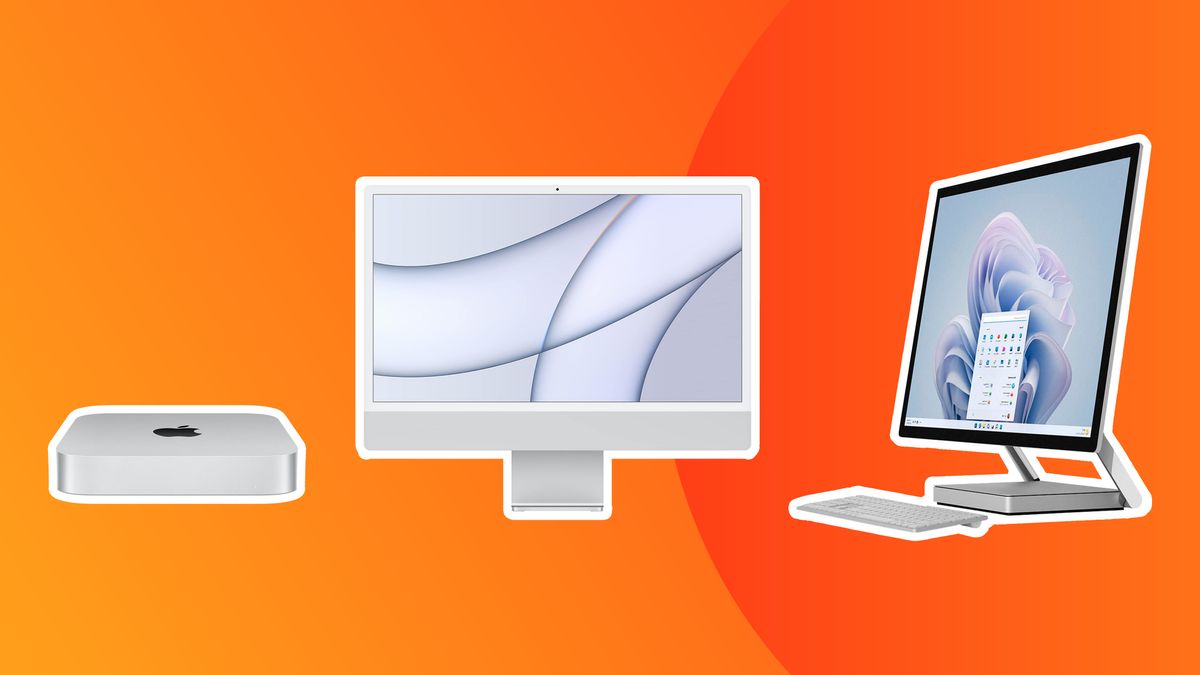The best computer for graphic design work needs to have enough processing power to run software such as Adobe Illustrator and Photoshop, as well as a bright display with excellent colour reproduction, and plenty of ports for peripherals. To help you pick the right one, we’ve put together a range of options including both Macs and PCs.
The computers in this guide have each been hand-picked by our expert team of reviewers, who personally test and review all of the latest computers and laptops especially those tailored to graphic designers. Their findings and opinions inform our comments here – read our page on how we test computers for more detail.
A few of the options on this list don’t come with a display, so you might want to invest in one of the best monitors for graphic artists too for the complete setup. Alternatively, if you’d prefer a laptop to a desktop, then check out our guide to the best laptops for graphic design.
Quick list
We’ll start with a quick overview of our top picks of the best computers for graphic design. Scroll down for more details on each.
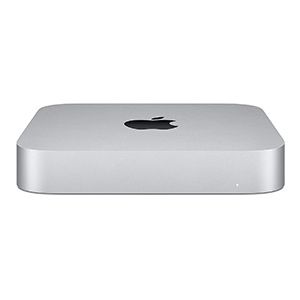 Best overall
Best overall
It may be tiny, but our testing showed the latest Mac Mini to be incredibly capable thanks to Apple’s M2 Pro chip. It handles complex creative tasks with ease, and it’s nearly impossible to overload, even when running multiple programs.
Read more below
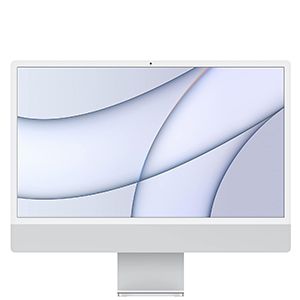 Best all-in-one
Best all-in-one
With the new M3 iMac now out, the previous M1 all-in-one is seeing solid discounts, making it excellent value. It still provides enough power for programs like Illustrator and a great webcam.
Read more below
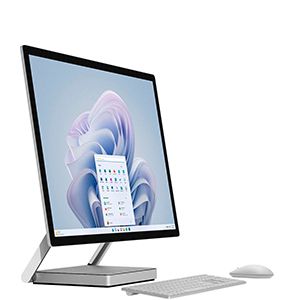 Best Windows
Best Windows
If you’d rather run Windows than macOS, the Surface Studio 2+ is a great all-in-one alternative, and it has the benefit of a high-resolution touch-sensitive display and seamless colour profile switching.
Read more below
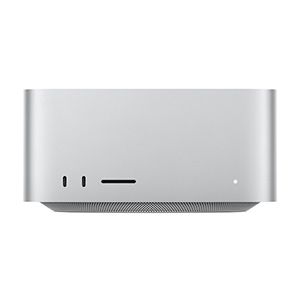 Most powerful
Most powerful
With its M2 Max or Ultra chip, the Mac Studio is more than most people need for graphic design alone, but those with complex workflows will appreciate the speed and the ability to run up to eight displays.
Read more below
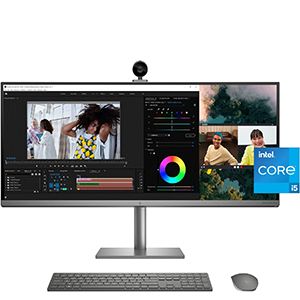 Ultrawide
Ultrawide
With an ultrawide 34-inch 5K display, we found this Windows all-in-one to be ideal for multitasking and working across two design programs at once. It’s highly configurable, with powerful specs available.
Read more below
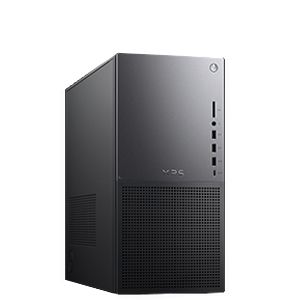 Best value
Best value
This is one of the few remaining desktop towers still being made for a non-gaming market, and one of the best. We think it’s great value when you compare performance and affordability.
Read more below
The best computer for graphic design
Why you can trust Creative Bloq
Our expert reviewers spend hours testing and comparing products and services so you can choose the best for you. Find out more about how we test.
Best computer for graphic design overall
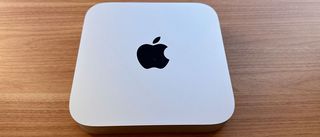
Specifications
Reasons to buy
Reasons to avoid
We rate the Mac mini (M2 Pro, 2023) as the best computer for graphic design today. Despite a beautifully compact and minimalist design, our testing found it to be very capable thanks to Apple‘s powerful M2 Pro chip, which takes performance to a whole new level. Our testing actually found it to be 10% faster than the M2 Max-powered MacBook Pro.
In practice, our reviewer found it handled complex, labour-intensive tasks with ease, for example working on design in Illustrator and Photoshop at once while running Freeform and multiple browser tabs. We tested the 16GB RAM version, and found that to be plenty of memory for this kind of design workflow, but if you do need more because you work with many layers of effects or you also do 3D and video work, you can opt to take memory up to 32GB.
Ports are well catered for too. The base M2 version has Ethernet LAN, two Thunderbolt ports, HDMI, two USB and an audio jack, but the M2 Pro model adds two extra Thunderbolt ports and support for up to three displays, easily supporting a design workflow using multiple monitors.
We think the Mac mini is also very good value considering its performance and specs. However, you only get the computer alone, so you’ll need to buy a keyboard, monitor and mouse separately, which takes the cost up considerably when compared to the all-in-1s we’ve mentioned below.
See our full Mac mini (M2 Pro, 2023) review for more details.
Best all-in-one computer for graphic design
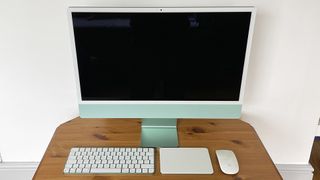
Specifications
Reasons to buy
Reasons to avoid
The 2021 24-inch iMac doesn’t have the discrete graphics card of the previous 2020 iMac, and sports a slightly lower-res display, but our reviewer found that the M1 processing chip delivered great performance, with the neural engine enhancing machine-learning-based tasks like object detection and AI-based upscaling. This also benefits the webcam, which can make real-time colour adjustments.
The overall design is sleeker and more sophisticated than its predecessors. As we noted in our review, it offers a generous amount of built-in storage, which is a must if you’re working with high-res image files. Best of all, this 2021 device can now offer great value as it’s coming in for discounts following the release of the 2023 M3 version. Yes, the M3 does provide more power and could be worth the higher cost if you’re also doing video editing, but for graphic design needs, we found this 2021 iteration to perform perfectly well.
Ports are a little lacking on the base version, which has two USB Type-C/Thunderbolt 4 as its only data ports. A higher configuration adds two extra USB Type-C ports and an Ethernet port on the power brick.
For more details, read our full hands-on M1 iMac (2021) review, as well as our comparison article, iMac 24 vs iMac 27.
Best Windows computer for graphic design
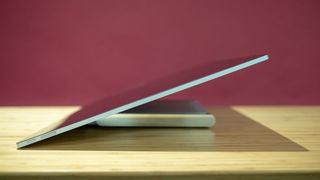
Specifications
Reasons to buy
Reasons to avoid
Many graphic designers have a preference for Apple computers, but there are plenty of suitable Windows computers for graphic design too. Our top pick is Microsoft‘s own Surface Studio 2+, and we think this Windows PC for graphic design boasts some strong selling points of its own. Chief among them is the high-resolution, touch-sensitive display. This includes support for Microsoft’s Surface Pen stylus (included), which can be a game changer for those who want to be able to hand draw vectors or selections without using a graphics tablet.
Drawing onto a vertical display might not sound like a comfortable experience, but the Surface Studio 2 has a nifty solution to that. The thin display retains its predecessor’s magical ‘gravity hinge’, which allows the screen to be lowered to a 20-degree angle, making it much more comfortable to draw on. and though pretty large, we found the screen moves easily around a table, just like moving paper on a desk, yet doesn’t feel like it could slip or be pushed away accidentally when in use, providing enough resistance at whatever angle we chose to work at.
We also appreciated the ability to switch instantly between colour profiles from sRGB to vivid and DCI-P3 modes. We would love the addition of a charging dock for the stylus, but AAAA batteries are cheap and easy to come by.
A little confusingly, the 2+ is the successor to the Surface Studio 2, which we loved when it was released in 2019. We’re not sure why they didn’t call it Surface Studio 3 to make things clearer (It’s also not to be confused with the Surface Laptop Studio 2). The main difference from its predecessor is the upgrade to an 11th-generation Core i7 processor and Nvidia GeForce RTX graphics, which we found speeds everything up considerably without throwing the baby out with the bathwater.
See our Surface Studio 2 review for more of our take.
Most powerful computer for graphic design
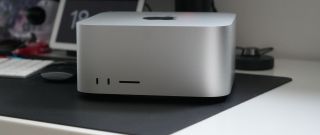
Specifications
Reasons to buy
Reasons to avoid
The Apple Mac Studio M2 Ultra is one of the most powerful computers you can buy right now, and certainly Apple’s most powerful. As you may expect, with great power comes a high price tag, and is not a price that’s necessary to pay for most graphic design work.
However, if you’re also working in demanding high-resolution video editing or 3D work, you’re likely to appreciate the additional grunt, and everyone will appreciate the increased speed of performance.
Our reviewer found the M2 Ultra 128GB RAM configuration made light work of the most intense tasks and was exceptionally good when multitasking. She was able to work across multiple programs simultaneously without waiting for anything to load. On top of that, the M2 Ultra can support up to eight 4K displays, six 6K displays or three 8K displays all running at 60Hz, making it the ultimate setup for complex workflows over multiple screens.
Our Mac Studio M2 Ultra review runs through this in more detail.
The best ultrawide all-in-one for graphic design
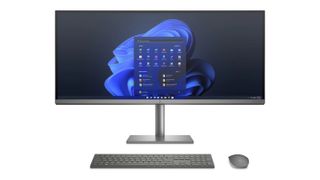
05. HP ENVY 34 All-in-One
Our expert review:
Specifications
Reasons to buy
Reasons to avoid
There are plenty of PCs for graphic design that offer competition to the iMac. We already mentioned the Surface Studio 2, which is an expensive touchscreen option. The HP ENVY 34 All-in-One is more affordable and one of the best such challengers to Apple’s two-in-one that we’ve tested.
The display isn’t touch-sensitive, but it’s an ultrawide 34-inch 5K display, making it a potential space- and wallet-saving alternative to a multi-monitor setup. We found the base version with discrete Nvidia GeForce GTX 1650 graphics to have plenty of computing power for graphic design, and it’s highly configurable, so you can bump up the storage and processing power almost as much as you may need.
We loved the simple, minimalist design, which means the ENVY 34 All-in-One can blend in well in pretty much any home or office environment. There’s a solid array of ports on the back and the side, and we liked the detachable, magnetic camera, which provides the flexibility to show people work from any angle during online calls.
Best affordable computer for graphic design

06. Dell XPS Desktop
Our expert review:
Specifications
Reasons to buy
Reasons to avoid
The Dell XPS line of desktop PCs is one of the few remaining desktop towers still being made for a non-gaming market, but thankfully it also happens to be one of the best. Even the lowest-spec model still packs a dedicated Nvidia GeForce GTX 1650, so those without a tonne of cash to splash can get a capable machine for a very reasonable price.
And if you do have a bigger budget, you can opt for the 11th generation Intel i9 processor and an RTX 3070 graphics card, which we found provides better performance for video editing and any GPU-accelerated design tasks or plugins.
Aside from the price, we were happy with the selection of ports, which are handily located across the front of the tower, removing the need to fuss around at the rear of the machine. There’s also a built-in SD card slot, which will please some photographers. But we think the best thing of all about opting for a Windows-based PC is that it gives us more freedom to customise components, providing the option to make upgrades further down the line.
Best gaming computer for graphic design
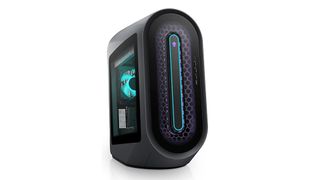
07. Alienware Aurora R13/14
Our expert review:
Specifications
Reasons to buy
Reasons to avoid
Gaming computers are far more abundant than family desktop towers these days, but because of the powerful components they pack, they also tend to be excellent graphic design PCs. This Alienware example is one of the best (and more affordable) models on the market – and it’s also number four on our best gaming PCs list. It has a flashy design, and is an incredible workstation for gaming sessions, let alone for graphic design.
Dell’s Alienware brand is one of those love-it-or-hate-it concepts, but it comes in a range of configurations, so you can easily pick a model that best suits your needs and budget. The reality is that many optimisations for gaming purposes aren’t strictly relevant to graphic design, but the graphics performance with the Alienware Aurora R13 makes this a sound option in our book.
We’re recommending both the Aurora R13 and R14 models here, since they’re essentially the exact same machine – the only difference being that the R13 makes use of Intel CPUs, and the R14 uses AMD Ryzen ones. For that reason, you might find better prices for the R14. Nonetheless, the R13 and R14 are highly futureproofed since they provide the flexibility to upgrade whenever you like.
How to choose a computer for graphic design
When it comes to choosing which computer is best for graphic design, there are several key things you’ll want to look for, and these are the pillars that also inform which devices we have included in the list above.
For starters, you’ll need enough power to run the best graphic design software without stuttering. Ideally, you’ll want a CPU with four, six or more cores to run creative software as well as 16GB memory if not more. A dedicated graphics card isn’t a must-have unless you’re also doing more demanding tasks like motion design or 3D rendering. For static design, the GPU sees little use and you can probably get away without a dedicated card. You’ll also want enough storage space to be able to cope with your workflow. How much will depend on the type of files you work with and whether you also use external or cloud-based storage.
Finally, you’ll the ultimate decision for you will depend on what kind of setup you prefer. Some PCs for graphic design included in our list above are integrated, all-in-one devices that have their own monitor, keyboard and mouse. That can work out cheaper, it makes buying easier and it reduces desk clutter. However, if you want to be able to choose your monitor and peripherals or work across a multiple-monitor setup, you may prefer to buy a computer alone. Budget is obviously another concern, and we have aimed to include options at different price points.
How we test computers for graphic design
Creative Bloq’s team of hardware experts bring with them many years of experience using, testing and benchmarking computers with a focus on running creative applications. All the computers in this guide have been tested either by using graphic design software or benchmarked to ensure the CPU and GPU is capable of the most intensive graphic design tasks. We run different benchmark tests on each device depending on its intended use by its maker, but the benchmarks we’ve run all the computers in this guide through include the following:
• Cinebench R23/2024 – this assesses the performance of a computer’s CPU and GPU using real-world 3D rendering tasks
• Geekbench 5/6 – this tests the CPU’s processing power, both by using a single core for a single task at a time as well as all the CPU’s core to see its ability to multitask
• 3DMark – this assesses a computer’s ability to run 3D graphic rendering tasks
But perhaps more importantly than benchmarking, we evaluate machines in real-world scenarios, pushing them to the limit with multiple applications running to see how they perform in project-like conditions. Power, speed, flexibility, and what a computer looks and feels like to use are all criteria in our reviewing process. We do much more than simply unpack a test unit, run some benchmarks and then pack it up again; we have lived and worked with all of the above computers, running them in real-life scenarios and completed projects relevant to the subject of this guide, otherwise, we wouldn’t recommend these models to you. For more details, see our article on How we test.
FAQs
Should I buy a desktop computer or laptop for graphic design?
Desktop computers may have fallen out of favour with general home and office users over recent years, but they still play an important role in industries and markets that require a lot of power. While there are great laptops for graphic design out there that can help with your graphic design work, desktop computers can still provide more bang for buck.
Desktop PCs can usually be configured according to your needs, and tend to be more affordable than a laptop with comparable specifications. Windows desktop PCs for graphic design also have the advantage of being customisable, so you can replace and upgrade components as needed.
What specs does a desktop computer need to run graphic design software?
Ideally, you’ll want a CPU with four, six or more cores to run creative software as well. A dedicated graphics card isn’t needed for static design but is worth considering if you also do motion design.
One thing a PC for graphic design definitely does need is memory, or RAM. If you’re working on designs that feature a lot of layers or effects, you may find your RAM allocation getting eaten up quickly. We recommend at least 16GB, but 32GB RAM is ideal.
As for storage, you’ll want a speedy SSD with enough space to handle the types of files that you’ll be working with. Vector design files can be quite large, and we would generally recommend around 1TB of storage unless you’re routinely storing your files in cloud storage or external SSDs.
Is Mac or PC better for graphic design?
The battle between Apple and PC fans has been raging for decades, but as far as which brand is ‘best’ at graphic design, each has its respective strengths. There are very capable Mac and PC solutions for a range of demanding requirements across the market, but what brand you align yourself with will ultimately boil down to a few personal preferences.
Windows PCs are typically much cheaper than Apple alternatives, and desktop towers are usually easy to upgrade, which can greatly prolong the lifespan of a machine. For an especially beefy build, you can opt for a gaming PC as they usually pack a powerful graphics card, more memory (RAM) and a capable processor from either Intel or AMD. You also have the option of touchscreen all-in-ones.
Apple devices on the other hand, while more expensive in some regions, are known for being high-quality and are well-optimised for creative work. They have a simple, easy-to-use operating system. Historically, many graphic designers have used iMac and Mac products because of the Apple ecosystem and simply because it was considered the industry standard for several years.
These days, there’s no clear winner, despite our choices on this top ten list. Both operating systems are well-optimised to support the hardware and software needs of graphic designers. Ultimately, the preference is largely subjective, and many people tend to prefer to stick with the operating system that they are most familiar with.
